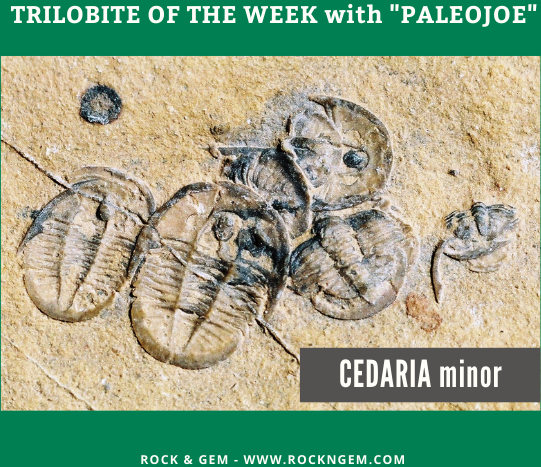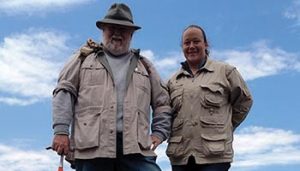
By Joseph “PaleoJoe” Kchodl
This is a cute but small oval-shaped trilobite. Typically, CEDARIA minor measures 3/8 inches long. It has a smooth glabella and Cephalon with a medium profile, making it not too tall or inflated.
The Cephalon ends in medium-length genal spines, and the pygidium is subisopygious, which means the tail is smaller than the head. The thorax generally contains seven to eight body segments.
CEDARIA minor has medium-size eyes located slightly forward on the glabella. The Cephalon has large, free cheeks. Molts of this species are commonly found missing both free cheeks.
Preservation of this species is often exquisite, and some specimens can be found inverted, exposing the hypostome or mouth part.
DID YOU KNOW: Trilobites, an extinct form of arthropod related to insects, crabs, crayfish, and horseshoe crabs, are among the most prevalent invertebrates with hard body parts to appear during the Cambrian Period. These creatures are called trilobite due to the three distinct “lobes” running vertically through the body section.

About the columnist: Joseph “PaleoJoe” Kchodl is a paleontologist, educator, veteran, author, fossil dig organizer/guide, business owner, husband, father, and grandfather, and fossil fanatic. For decades, he’s spent hours in classrooms around the Midwestern United States and beyond, speaking to school children about fossils and fossil hunting. Visit his site to purchase fossils, contact PaleoJoe, visit www.paleojoe.com.
Plus, learn more about PaleoJoe and his daughter PaleoJen and their paleontology exploration partnership in an the article “Fueling a Passion for Paleontology“.
If you enjoyed what you’ve read here we invite you to consider signing up for the FREE Rock & Gem weekly newsletter. Learn more>>>
In addition, we invite you to consider subscribing to Rock & Gem magazine. The cost for a one-year U.S. subscription (12 issues) is $29.95. Learn more >>>















